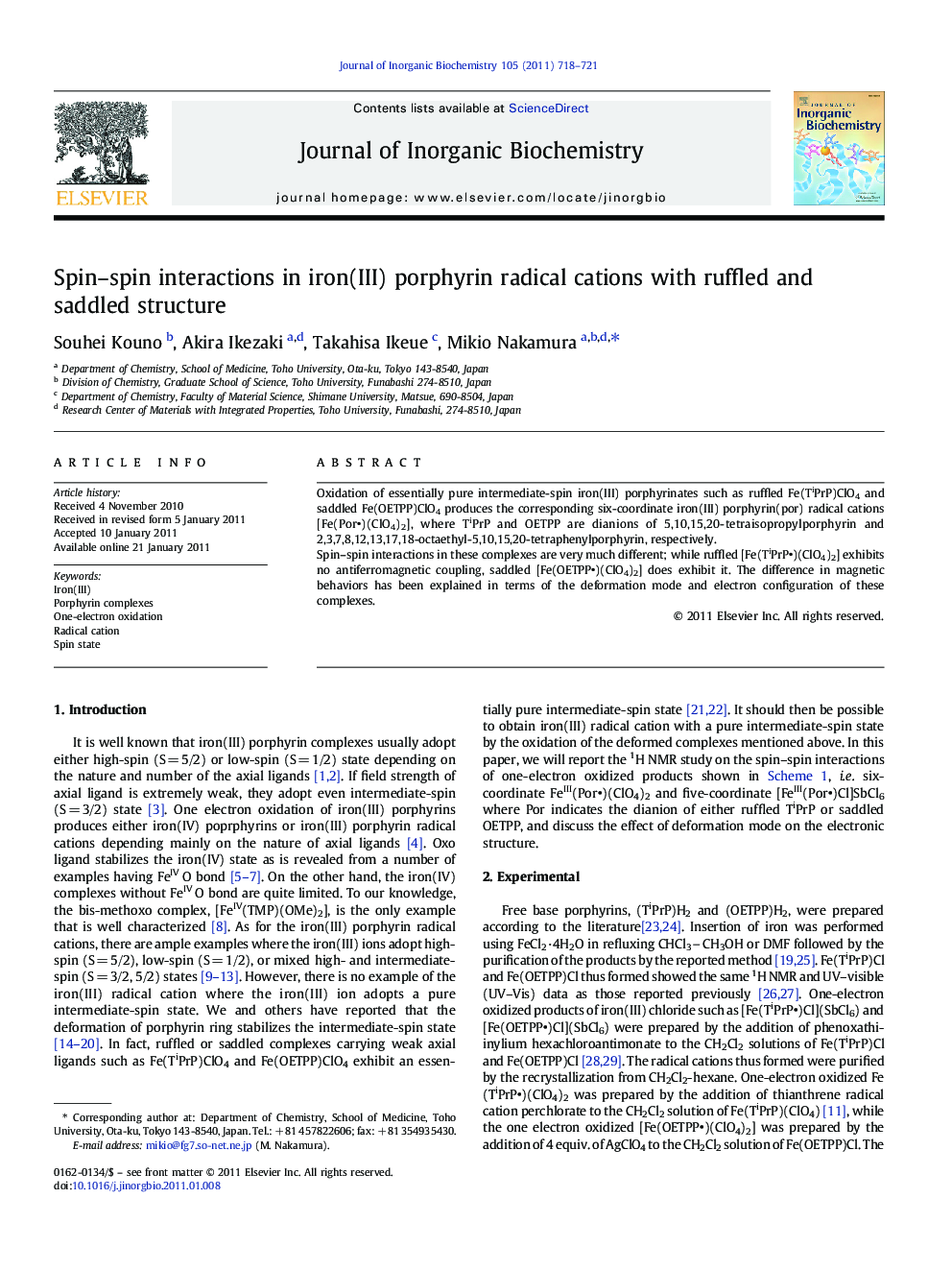| Article ID | Journal | Published Year | Pages | File Type |
|---|---|---|---|---|
| 1316246 | Journal of Inorganic Biochemistry | 2011 | 4 Pages |
Oxidation of essentially pure intermediate-spin iron(III) porphyrinates such as ruffled Fe(TiPrP)ClO4 and saddled Fe(OETPP)ClO4 produces the corresponding six-coordinate iron(III) porphyrin(por) radical cations [Fe(Por)(ClO4)2], where TiPrP and OETPP are dianions of 5,10,15,20-tetraisopropylporphyrin and 2,3,7,8,12,13,17,18-octaethyl-5,10,15,20-tetraphenylporphyrin, respectively.Spin–spin interactions in these complexes are very much different; while ruffled [Fe(TiPrP)(ClO4)2] exhibits no antiferromagnetic coupling, saddled [Fe(OETPP)(ClO4)2] does exhibit it. The difference in magnetic behaviors has been explained in terms of the deformation mode and electron configuration of these complexes.
Graphical Abstract1H NMR study of iron(III) porphyrin radical cations such as ruffled Fe(TiPrP)(ClO4)2 and saddled Fe(OETPP)(ClO4)2 has revealed that the spin–spin interactions between iron(III) and porphyrin radical are very much different, which has been explained in terms of the deformation mode and electron configuration of these complexes.Figure optionsDownload full-size imageDownload as PowerPoint slide
